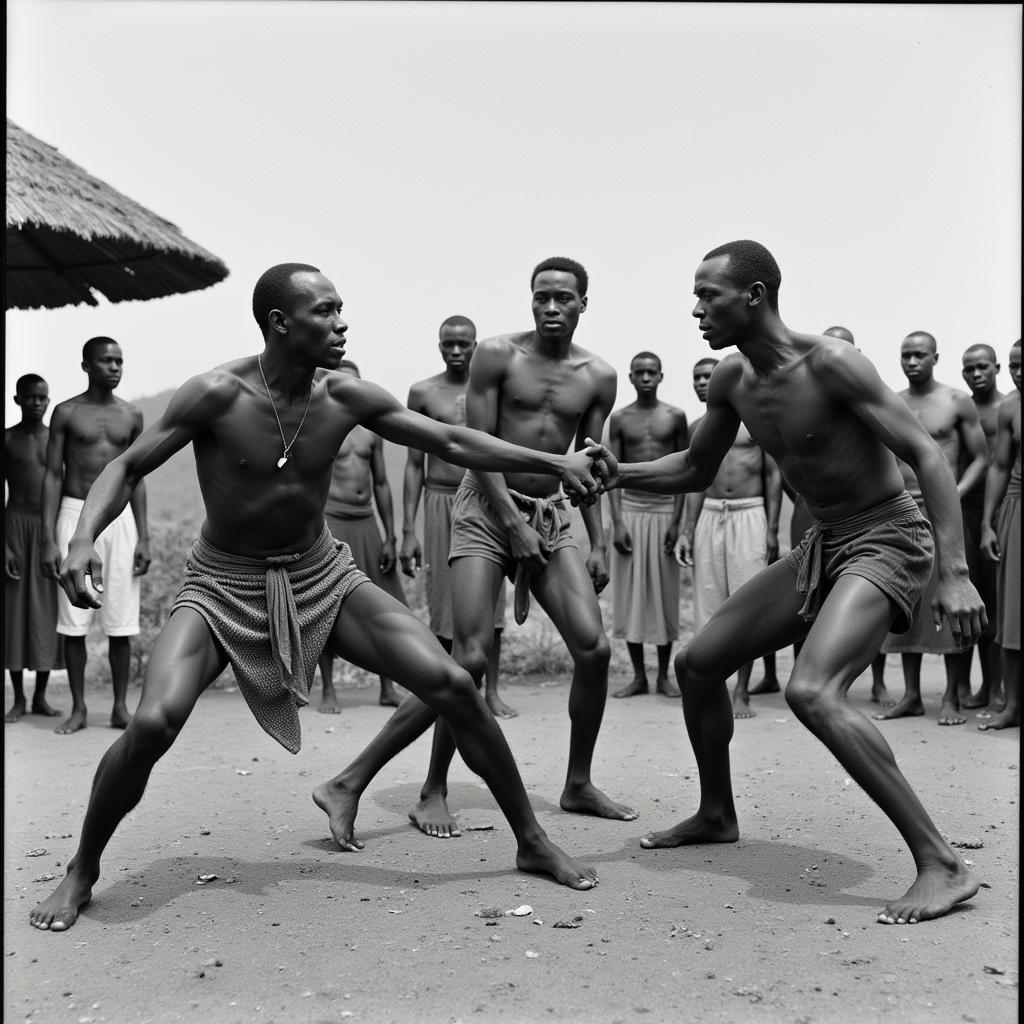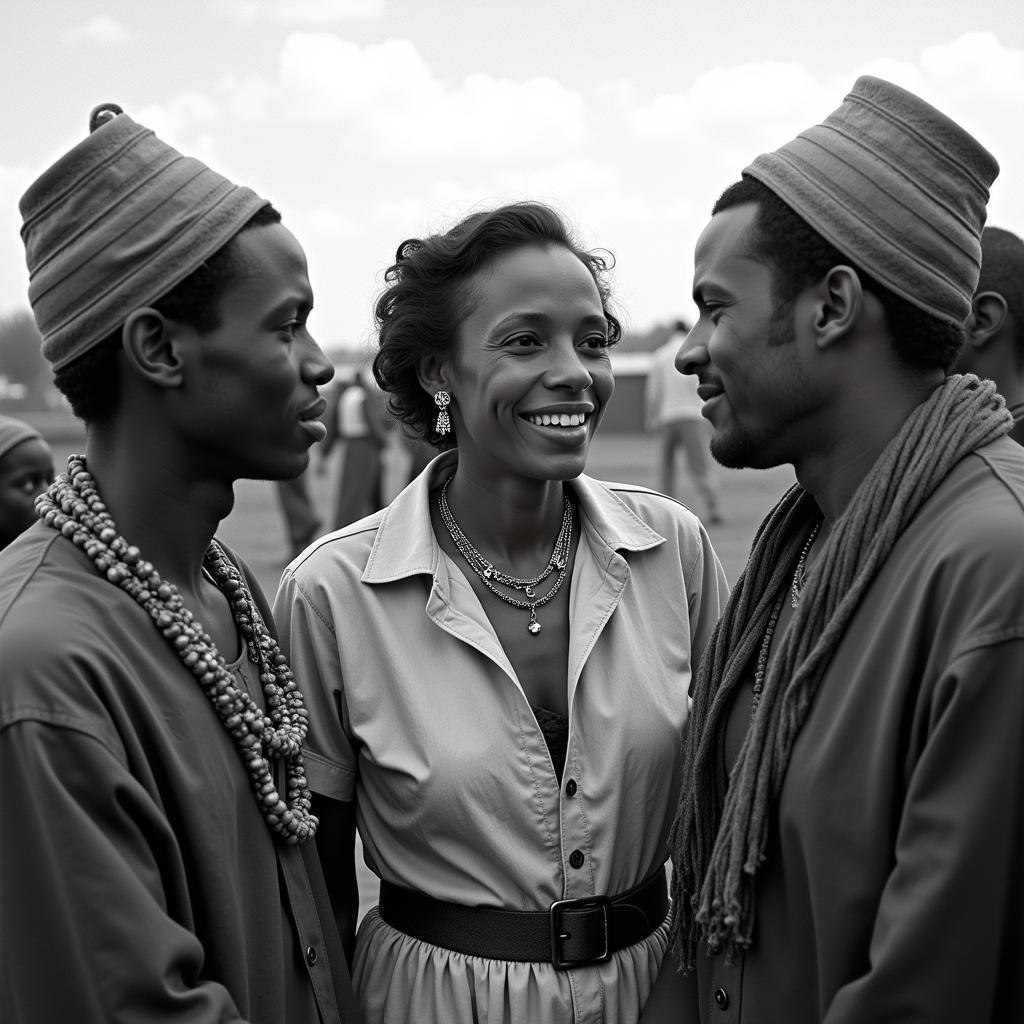Leni Riefenstahl and the Nuba are intertwined in a complex and often controversial narrative. Riefenstahl, a renowned German filmmaker, first encountered the Nuba people of Sudan in the 1960s and subsequently dedicated years to photographing and documenting their lives. Her work, while visually stunning, has sparked debate about its ethical implications and representation of the Nuba people.
The Aesthetics of Riefenstahl’s Nuba Photography
Riefenstahl’s photographic work with the Nuba is undeniably striking. Her images capture the physical beauty and athleticism of the Nuba people, often showcasing their traditional rituals and ceremonies. She employed a distinct aesthetic style, emphasizing dramatic lighting, dynamic composition, and the human form in motion. This resulted in powerful images that celebrate the strength and vitality of the Nuba. However, critics argue that this romanticized depiction overlooks the complexities of their lives and reduces them to mere aesthetic objects.
Riefenstahl’s focus on the physicality of the Nuba, particularly their wrestling matches and ceremonial dances, has been both praised and criticized. While some see it as a celebration of their cultural heritage, others view it as an exoticizing gaze that objectifies and simplifies their traditions.
 Leni Riefenstahl chụp ảnh đô vật Nuba
Leni Riefenstahl chụp ảnh đô vật Nuba
The Controversy Surrounding Riefenstahl’s Work
The controversy surrounding Riefenstahl’s Nuba work stems from several factors, including her association with the Nazi regime. Her earlier films, commissioned by the Nazi party, cemented her reputation as a talented filmmaker but also linked her indelibly to a dark period in history. This association inevitably casts a shadow over her later work, with some critics questioning her motivations and accusing her of continuing to employ propagandistic techniques in her depiction of the Nuba.
Another point of contention is the issue of consent and representation. Some argue that Riefenstahl’s work lacks genuine engagement with the Nuba people and their culture, presenting them through a Western lens that reinforces existing stereotypes. The question of whether the Nuba fully understood the purpose and potential impact of her photography remains a subject of debate.
Leni Riefenstahl, The Nuba, and the Question of Cultural Appropriation
The accusations of cultural appropriation levelled against Riefenstahl are complex and multifaceted. Some argue that her focus on the visual aspects of Nuba culture, without a deeper understanding or respect for their traditions, constitutes a form of exploitation. Others point to the power imbalance inherent in the relationship between a Western photographer and a marginalized community, suggesting that true representation requires collaboration and respect for cultural agency.
Despite the controversy, Riefenstahl maintained that her work was a tribute to the beauty and strength of the Nuba people. She saw herself as a documentarian, preserving their traditions for future generations. However, critics contend that her approach ultimately reinforces a colonial gaze, prioritizing aesthetic considerations over genuine cultural exchange.
“Riefenstahl’s work, while visually compelling, ultimately falls short of true cultural understanding,” says Dr. Anya Sharma, an anthropologist specializing in African cultures. “Her focus on the exotic aspects of Nuba life, without addressing the complexities of their social and political realities, reinforces a problematic narrative.”
 Leni Riefenstahl với người Nuba
Leni Riefenstahl với người Nuba
Conclusion: A Legacy of Beauty and Controversy
Leni Riefenstahl’s Nuba photographs remain a source of both fascination and debate. Her work, while visually stunning, is inextricably linked to her controversial past and raises important questions about representation, cultural appropriation, and the ethics of documentary photography. The legacy of Leni Riefenstahl and the Nuba continues to challenge us to grapple with the complex relationship between art, culture, and power.
FAQ
- Who were the Nuba people?
- What was Leni Riefenstahl’s connection to the Nazi party?
- Why is Riefenstahl’s work with the Nuba considered controversial?
- What is cultural appropriation?
- How did Riefenstahl defend her work with the Nuba?
Mô tả các tình huống thường gặp câu hỏi.
Một số người thắc mắc về mục đích của Riefenstahl khi chụp ảnh người Nuba, liệu đó là sự tôn vinh văn hóa hay sự chiếm đoạt văn hóa. Những người khác đặt câu hỏi về bối cảnh lịch sử của Riefenstahl và liệu điều đó có ảnh hưởng đến cách diễn giải tác phẩm của bà hay không.
Gợi ý các câu hỏi khác, bài viết khác có trong web.
Bạn có thể tìm hiểu thêm về nhiếp ảnh và đạo đức trong mục “Đạo đức trong Nghệ thuật” trên trang web của chúng tôi. Chúng tôi cũng có một bài viết về văn hóa Nuba, cung cấp thêm bối cảnh về người dân và truyền thống của họ.